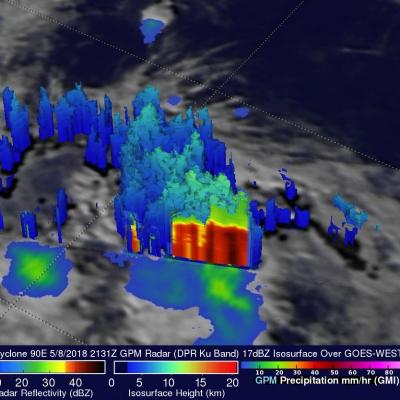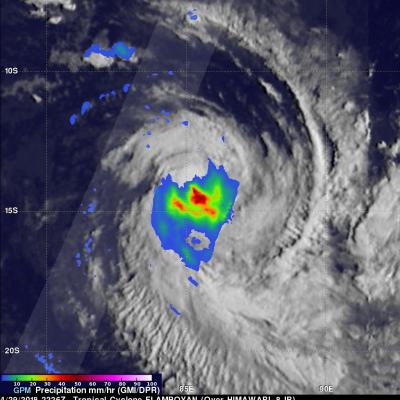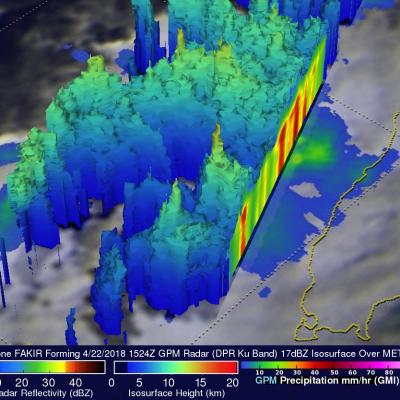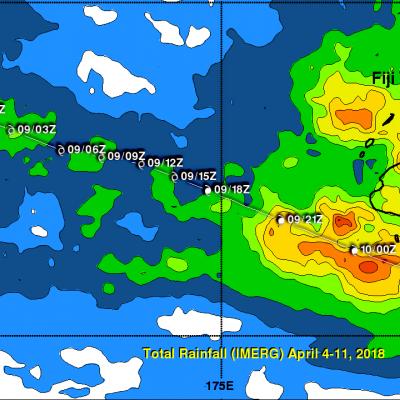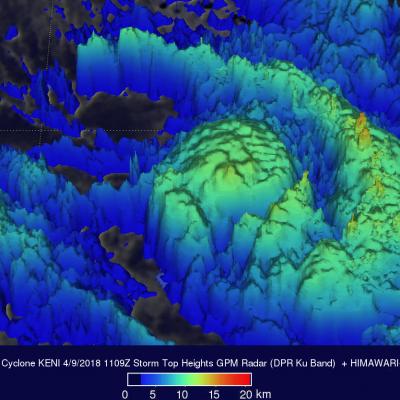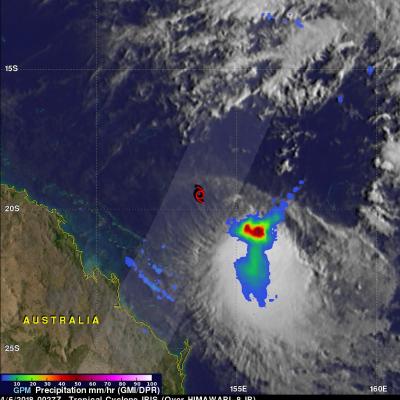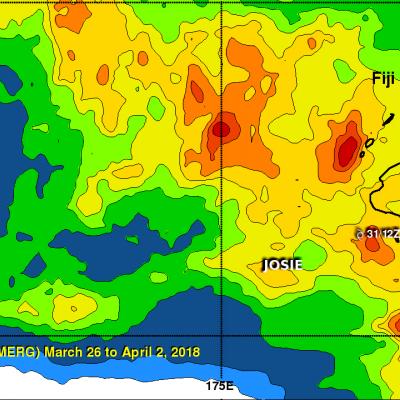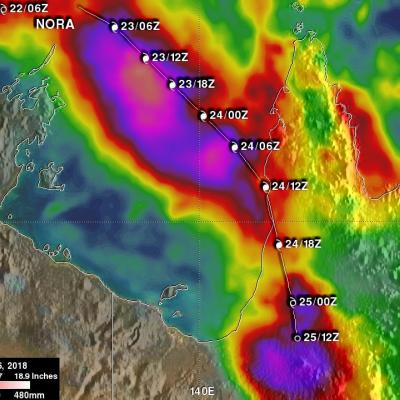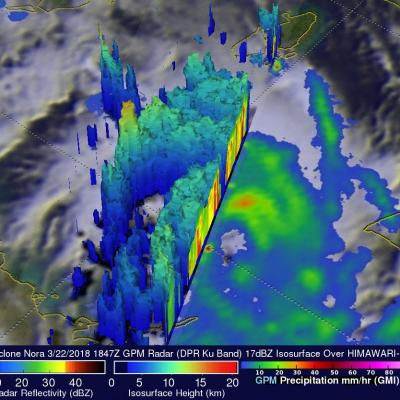Potential Eastern Pacific Tropical Cyclone Viewed By GPM
The Eastern Pacific hurricane season officially starts on May 15, 2018. A low pressure center located well to the southwest of the Baja California Peninsula may develop into this area's first tropical cyclone of 2018. Low vertical wind shear and warm ocean temperatures in the vicinity of the low are providing favorable conditions for this low's development into a tropical cyclone. If it develops it will be called Aletta. The GPM core observatory satellite passed over the center of the most intense convective storms in this potential tropical cyclone. Rainfall data collected by GPM's satellite


